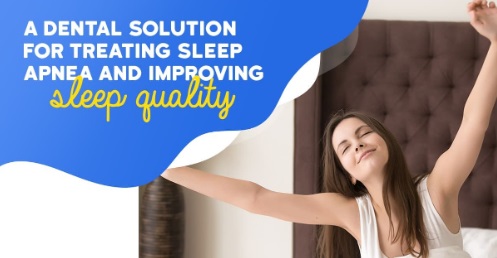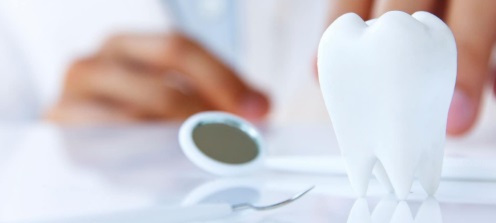Sleep Apnea and Dentistry: How a Custom Oral Appliance Can Help You Breathe Easy
Sleep apnea affects over 22 million Americans, yet many don’t realize their dentist could hold the key to better sleep. While CPAP machines have long been the standard treatment, custom oral appliances offer a comfortable, effective alternative that’s changing how we approach sleep-disordered breathing.
If you’ve been struggling with loud snoring, daytime fatigue, or interrupted sleep, you’re not alone. Sleep apnea is more than just a nighttime annoyance—it’s a serious medical condition that can impact your heart health, cognitive function, and overall quality of life. The good news? Modern dentistry offers innovative solutions that can help you breathe easier and sleep better.
This comprehensive guide explores how custom oral appliances work, their benefits over traditional treatments, and what you can expect when working with a dental professional to address your sleep apnea and dentistry. We’ll also examine the surprising connection between your oral health and sleep quality, helping you understand why your dentist may be your best ally in achieving restful nights.
Understanding Obstructive Sleep Apnea (OSA)
Obstructive sleep apnea occurs when the soft tissues in your throat collapse during sleep, blocking your airway and interrupting normal breathing patterns. These interruptions, called apneas, can happen dozens or even hundreds of times per night, preventing you from reaching the deep, restorative sleep stages your body needs.
During an apnea episode, your brain briefly wakes you to restore normal breathing—though you may not remember these awakenings. This cycle repeats throughout the night, leaving you exhausted despite spending adequate time in bed. OSA is the most common form of sleep apnea, accounting for roughly 84% of all sleep apnea cases.
The condition ranges from mild to severe, depending on how frequently breathing interruptions occur. Mild OSA involves 5-14 events per hour, moderate OSA ranges from 15-29 events per hour, and severe OSA involves 30 or more breathing interruptions hourly. Without treatment, OSA can contribute to high blood pressure, heart disease, stroke, and diabetes.

The Connection Between Sleep Apnea and Dental Health
Your mouth’s anatomy plays a crucial role in sleep apnea development. The position of your jaw, tongue, and soft tissues directly affects airway space during sleep. This is why dentists, particularly those trained in sleep medicine, are uniquely positioned to help diagnose and treat sleep-disordered breathing.
Several oral factors can contribute to OSA. A narrow upper airway, large tongue, or jaw positioning issues can all reduce the space available for breathing during sleep. Additionally, teeth grinding (bruxism) often accompanies sleep apnea, as your jaw may clench in response to breathing difficulties.
Dentists can identify potential sleep apnea signs during routine examinations. Worn teeth from grinding, a scalloped tongue (indentations along the edges), and a narrow palate are all indicators that warrant further investigation. This early detection capability makes dental professionals valuable partners in sleep apnea management.
Symptoms and Diagnosis of Sleep Apnea
Sleep apnea symptoms extend far beyond snoring, though loud, irregular snoring is often the most noticeable sign. Other common symptoms include morning headaches, difficulty concentrating, irritability, and excessive daytime sleepiness. Many people also experience frequent nighttime urination, dry mouth upon waking, and restless sleep.
Partners often notice breathing interruptions, choking sounds, or gasping during sleep before the affected person recognizes the problem. These observations are valuable diagnostic clues that healthcare providers use when evaluating potential sleep apnea cases.
Formal diagnosis requires a sleep study, either conducted in a specialized lab or through a home sleep test. These studies monitor breathing patterns, oxygen levels, heart rate, and brain activity throughout the night. The results help determine sleep apnea severity and guide treatment recommendations.
It’s important to note that sleep apnea symptoms can mimic other conditions, including depression, ADHD, and thyroid disorders. This overlap makes professional evaluation essential for accurate diagnosis and appropriate treatment planning.
The Role of Custom Oral Appliances in Treating Sleep Apnea
Custom oral appliances, also called mandibular advancement devices (MADs), work by gently repositioning your lower jaw and tongue to keep your airway open during sleep. Unlike one-size-fits-all solutions, these devices are precisely crafted based on impressions of your teeth and mouth structure.
The appliance resembles a sports mouthguard but is specifically designed to maintain optimal jaw positioning throughout the night. By advancing the lower jaw slightly forward, the device prevents soft tissues from collapsing and blocking your airway. This mechanical approach addresses the root cause of obstructive sleep apnea.
Modern oral appliances feature adjustable components that allow fine-tuning for maximum comfort and effectiveness. Your dentist can make gradual adjustments during follow-up visits to optimize treatment outcomes while ensuring you can wear the device comfortably throughout the night.
Research shows that oral appliances can reduce apnea episodes by 50% or more in many patients. The American Academy of Sleep Medicine recognizes oral appliance therapy as a first-line treatment for mild to moderate OSA and as an alternative for severe cases when CPAP therapy isn’t tolerated.
Benefits of Oral Appliance Therapy (OAT)
Oral appliance therapy offers several advantages over traditional CPAP treatment. The most significant benefit is improved compliance—studies show that patients are more likely to use oral appliances consistently compared to CPAP machines. This increased usage translates to better treatment outcomes and improved quality of life.
Comfort is another major advantage. Custom oral appliances are designed specifically for your mouth, making them more comfortable than generic devices. Many patients adapt to wearing them within a few nights, and some report improved sleep quality from the first use.
Portability makes oral appliances ideal for travel. Unlike CPAP machines, which require electricity and create noise, oral appliances are silent and don’t need power sources. This convenience factor is particularly appealing to frequent travelers who struggled with CPAP portability.
Oral appliances also offer discretion that many patients appreciate. There are no masks, hoses, or machines involved—just a small, custom-fitted device that others won’t notice. This discretion can be particularly important for people who feel self-conscious about sleep apnea treatment.
The therapy is also reversible and non-invasive. Unlike surgical options, oral appliance therapy doesn’t permanently alter your anatomy. If needed, treatment can be modified or discontinued without lasting effects.
What to Expect During a Consultation
Your initial dental consultation will involve a comprehensive evaluation of your sleep symptoms, medical history, and oral anatomy. The dentist will examine your teeth, jaw position, tongue size, and airway space to determine if you’re a good candidate for oral appliance therapy.
Advanced practices like Macedo Smile Designer/Advanced Center for Cosmetic Dentistry use sophisticated imaging and assessment tools to evaluate your case thoroughly. This technology helps create the most effective treatment plan for your specific anatomy and sleep apnea severity.
During the consultation, you’ll discuss your sleep patterns, quality of life impacts, and treatment goals. The dentist will explain how oral appliances work, what to expect during treatment, and how the device will be customized for your needs. This is also an excellent time to ask questions about comfort, care, and expected outcomes.
If oral appliance therapy seems appropriate, the next step involves taking precise impressions of your teeth and bite. These impressions serve as the foundation for creating your custom device, ensuring optimal fit and function.
The Process of Getting a Custom Oral Appliance
Creating your custom oral appliance begins with detailed impressions of your upper and lower teeth. Modern dental practices may use digital scanning technology instead of traditional impression materials, providing greater accuracy and comfort during the process.
The impressions are sent to a specialized laboratory where skilled technicians craft your appliance using high-quality, biocompatible materials. The fabrication process typically takes 2-3 weeks, during which the lab creates a device tailored to your specific measurements and treatment requirements.
Once your appliance is ready, you’ll return for a fitting appointment. The dentist will ensure proper fit, make any necessary adjustments, and teach you how to insert, remove, and care for your device. You’ll also receive detailed instructions about gradually increasing wear time to allow comfortable adaptation.
Follow-up appointments are scheduled to monitor your progress and make refinements as needed. Most patients require several adjustment visits during the first few months to optimize comfort and effectiveness. Your dentist may also coordinate with your sleep physician to evaluate treatment success through follow-up sleep studies.
Lifestyle Changes to Support Sleep Apnea Treatment
While oral appliances are highly effective, combining treatment with healthy lifestyle changes can enhance results. Weight management is particularly important, as excess weight can worsen sleep apnea by increasing soft tissue around the airway.
Sleep position matters too. Sleeping on your back can worsen symptoms by allowing gravity to pull soft tissues into your airway. Side sleeping often reduces symptom severity and can complement oral appliance therapy effectively.
Avoiding alcohol and sedatives before bedtime helps maintain better muscle tone in your throat tissues. These substances relax muscles that help keep your airway open, potentially increasing apnea frequency and severity.
Regular exercise improves overall health and can reduce sleep apnea severity. Even moderate weight loss and increased fitness levels can significantly impact treatment outcomes when combined with oral appliance therapy.

The Importance of Regular Dental Checkups
Ongoing dental care is essential for successful oral appliance sleep apnea therapy. Regular checkups allow your dentist to monitor device fit, assess any changes in your oral health, and make adjustments as needed. These visits also help identify potential issues before they affect treatment effectiveness.
Your teeth and jaw may shift slightly over time, potentially affecting how your appliance fits and functions. Regular evaluations ensure optimal positioning is maintained throughout your treatment journey.
Dental checkups also provide opportunities to address any side effects or concerns. While most patients adapt well to oral appliances, some may experience temporary tooth movement, jaw discomfort, or excessive salivation. Your dentist can provide solutions and modifications to address these issues.
Proper appliance care and maintenance are also reviewed during regular visits. Learning correct cleaning techniques and recognizing signs that replacement may be needed helps ensure your treatment remains effective long-term.
Your Path to Better Sleep Starts Here
Taking the first step toward improved sleep quality can be life-changing. By addressing issues such as sleep apnea or snoring with the help of customized oral appliances, you are investing in both your health and overall well-being. A tailored treatment plan developed by your dentist ensures the approach aligns with your unique needs and lifestyle. With consistent follow-up care, proper appliance use, and expert guidance, you can experience restful nights and energized days.
https://www.google.com/maps?cid=11223011915097161618
